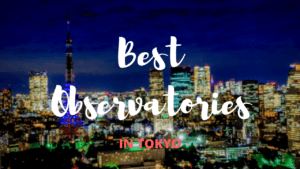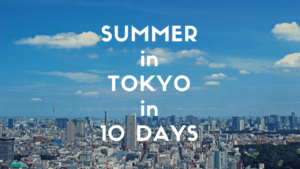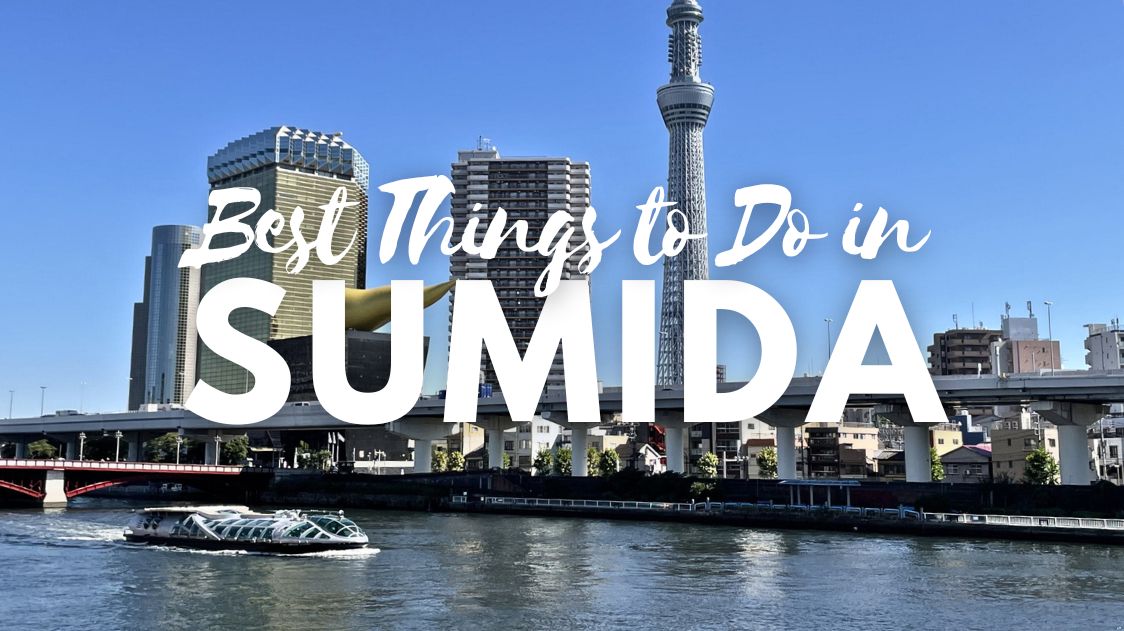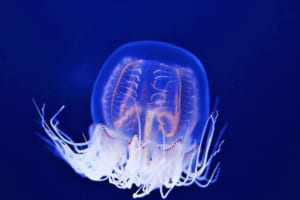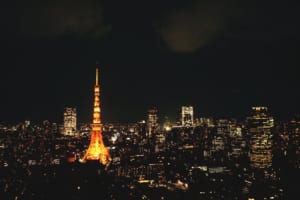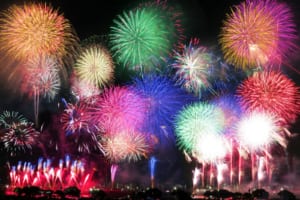Tokyo Solamachi: A Modern Urban Playground
Explore Tokyo Solamachi: Shopping, Dining, and Attractions
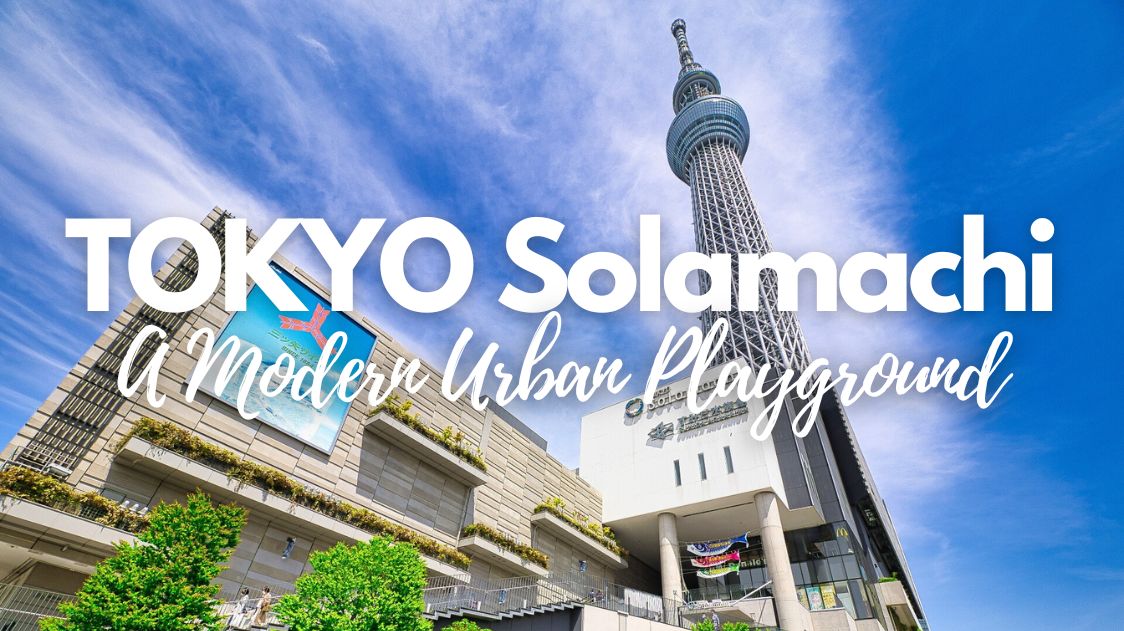
Since its opening as the commercial facility that’s accompanying the iconic Tokyo Skytree, it has quickly become a must for the locals in the area and an interesting enough option for tourists, not necessarily only for those who visit the iconic tower.
With several hundreds of shops and restaurants spread across multiple floors, it has a lot of fun experiences available! From fashion boutiques and souvenir shops to gourmet dining and unique attractions like the Sumida Aquarium and Konica Minolta Planetarium, it’s an urban playground that captures the spirit of Tokyo’s innovation and cultural richness.
Check also: 2 Days Itinerary in Tokyo: SHITAMACHI the Old Downtown
*Please note that this article contains affiliate links.
What is Tokyo Solamachi?
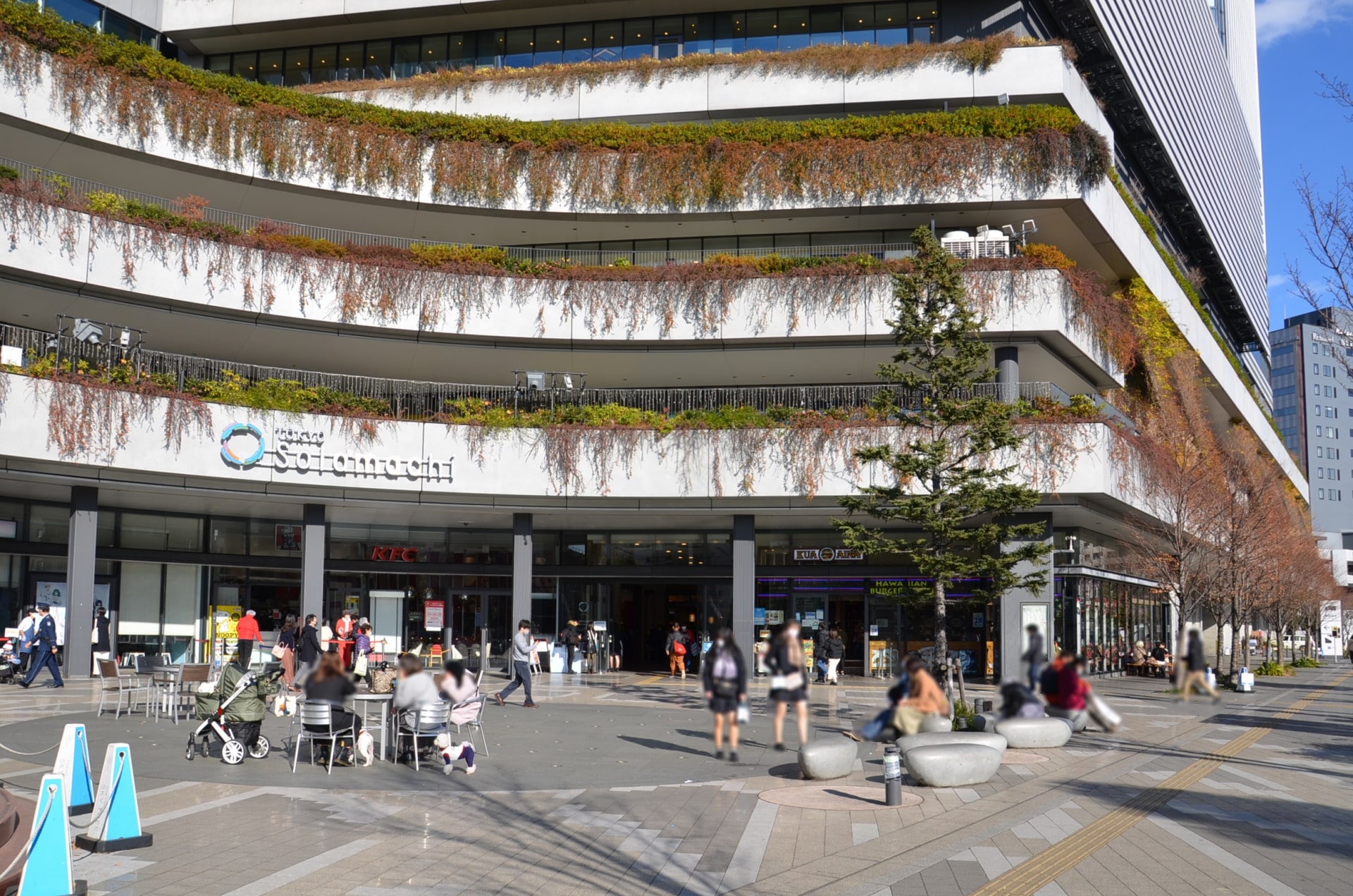
The name “Solamachi” is meant to be translated as “Sky Town” (pronounced in Japanese as sora machi), in reference to its connection to Tokyo Skytree. Spanning several floors, Tokyo Solamachi is an excellent complement to the experience of visiting the tower, with cultural and educational attractions in addition to its wide range of retail and dining options. It’s designed to cater to a wide range of interests and ages, so it’s a perfect spot for families or groups of friends!
<<Get your Tokyo Skytree tickets here!>>
What to do at Tokyo Solamachi
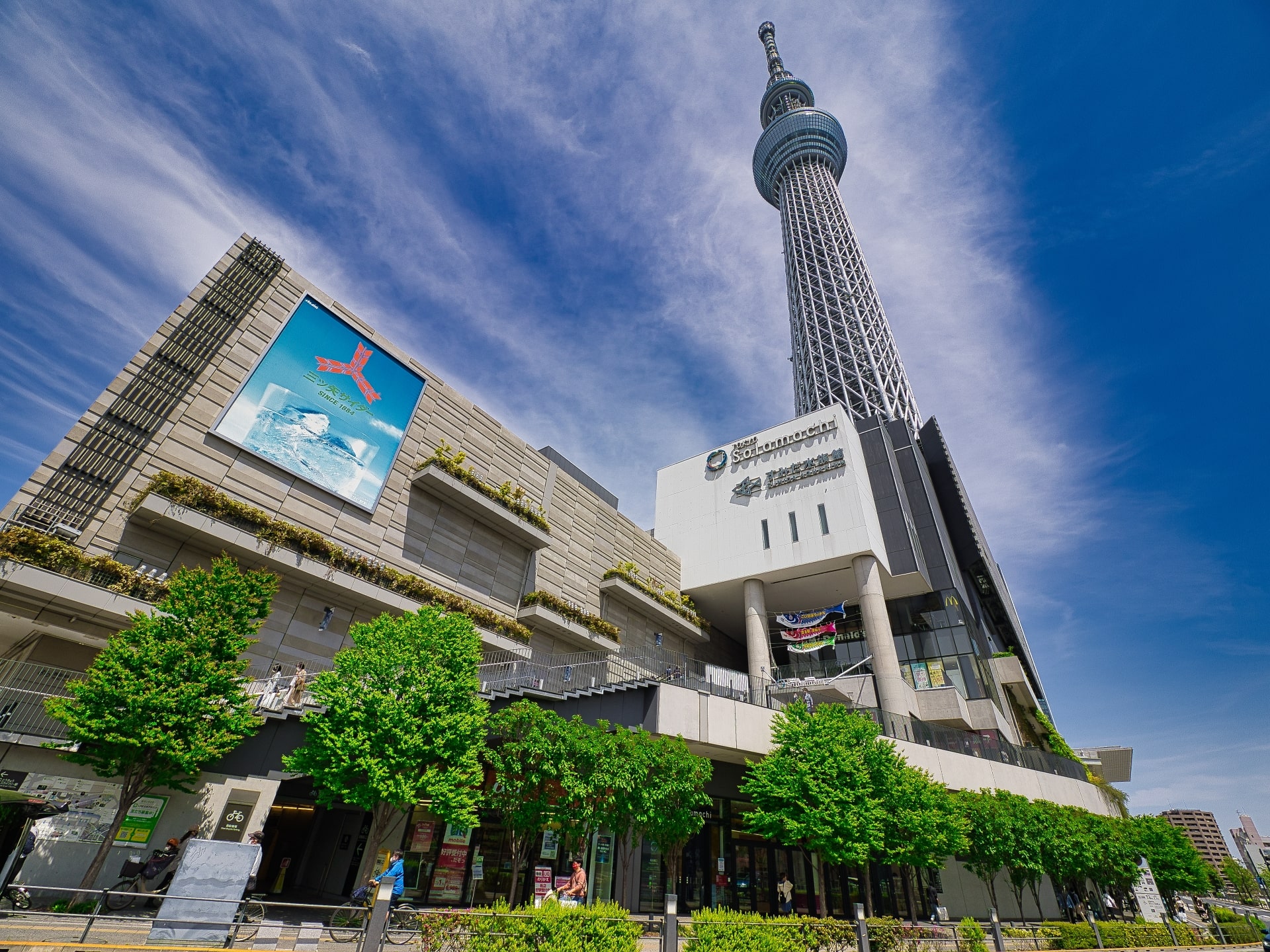
Dining: No matter what you feel like eating, you’ll be guaranteed to find something to your liking, with both Japanese and International cuisines widely available at all the restaurants and cafes. Notable dining areas include:
- East Yard 6-7F: Solamachi Dining: This area features many eateries that serve both Japanese and international cuisines like sushi, ramen, tempura, or Western dishes.
- 30-31F: Solamachi Dining Skytree View: Located on the upper floors, this dining area not only provides delicious meals but also stunning views of the Tokyo skyline and Skytree, enhancing your dining experience.
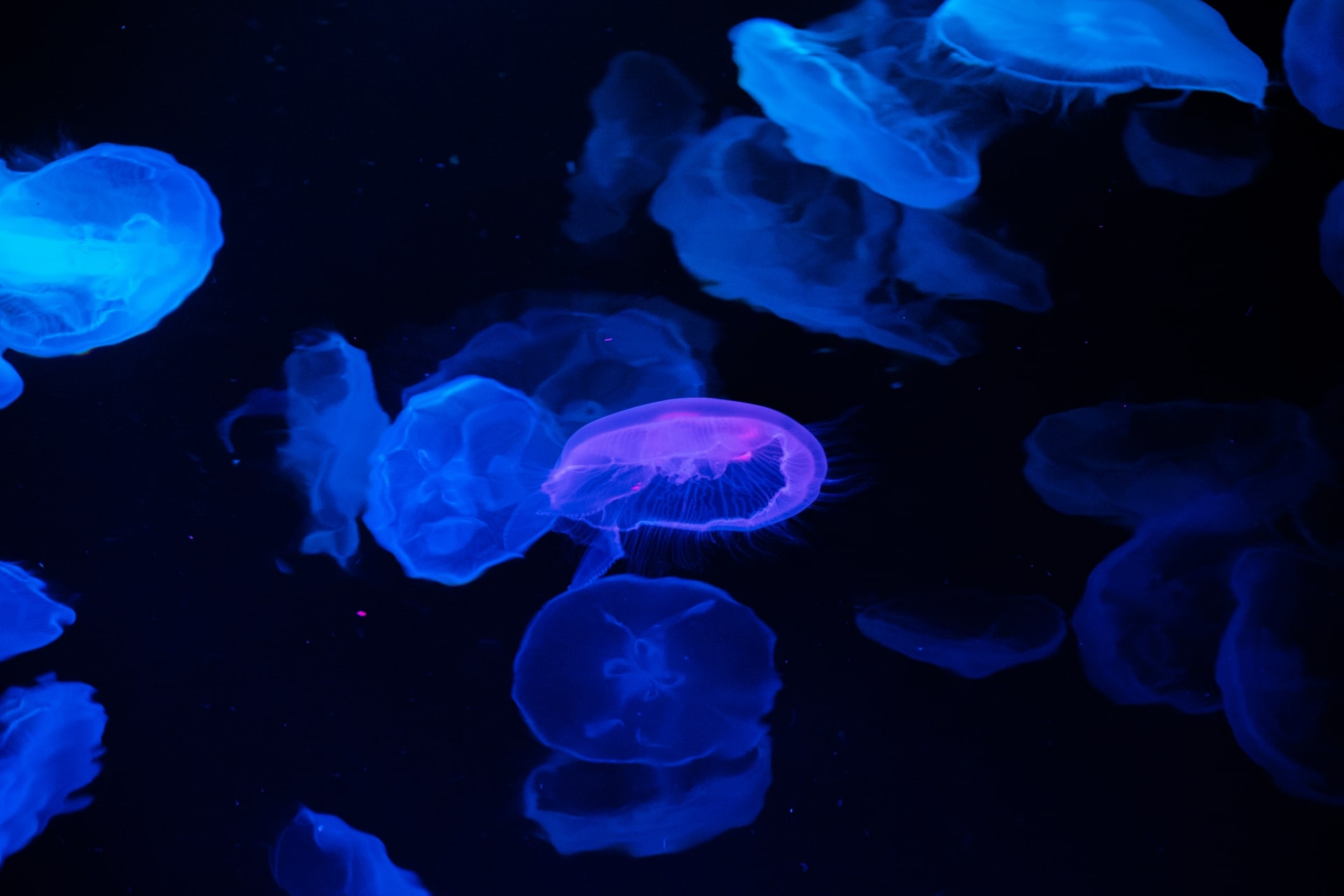
The jellyfish display, with its dim illumination and ethereal tanks, is particularly popular. Educational programs and hands-on activities make it a great destination for families and anyone interested in marine biology.
<<Get your Sumida Aquarium ticket or combo ticket Aquarium+Skytree here!>>
More info: Sumida Aquarium: the Modern Aquarium at Tokyo Skytree

Konica Minolta Planetarium TENKU in Skytree Town (コニカミノルタプラネタリウム天空 in 東京スカイツリータウン), East Yard 7F: Experience the wonders of the universe at this state-of-the-art planetarium. “TENKU”, which means “sky” in Japanese, offers immersive star-gazing experiences with high-definition projection technology and a realistic dome screen.
The planetarium hosts a variety of shows, from traditional star field projections to more artistic and thematic presentations, often accompanied by relaxing music and soothing narratives. It’s a perfect place to unwind and explore the cosmos, whether you’re an astronomy enthusiast or just looking for a relaxing and different experience.
How to get to Tokyo Solamachi
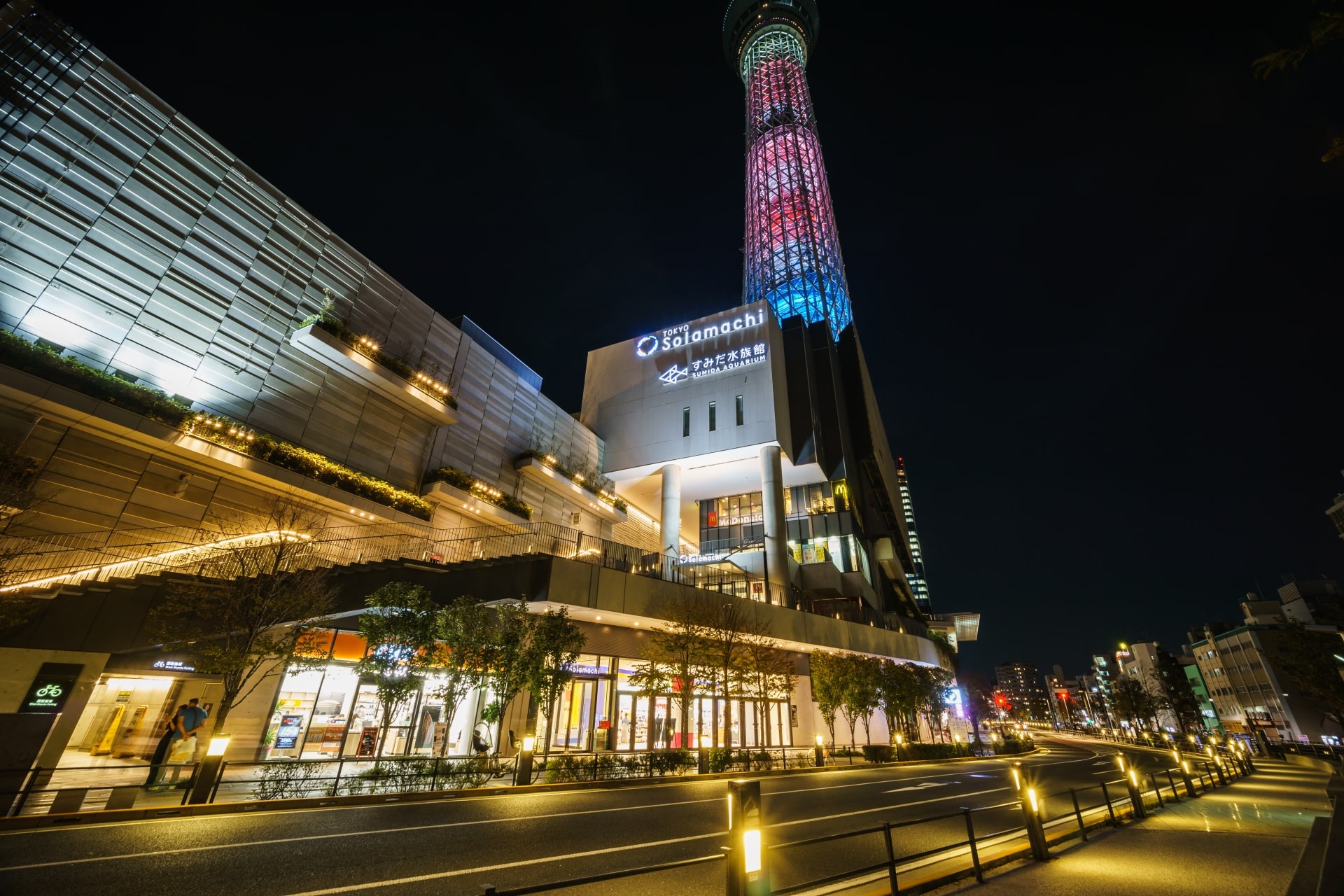
- Tokyo Skytree on the Tobu Skytree Line, right below the tower.
- Oshiage (Skytree) Station, served by the Tokyo Metro Hanzomon Line, Tobu Skytree Line, Keisei Oshiage Line, and Toei Asakusa Line, just a few meters away from the complex.
Tourist attractions near Tokyo Solamachi
Besides the obvious Tokyo Skytree above the complex, there are several other must-see spots in the vicinity:
Asakusa and Sensoji
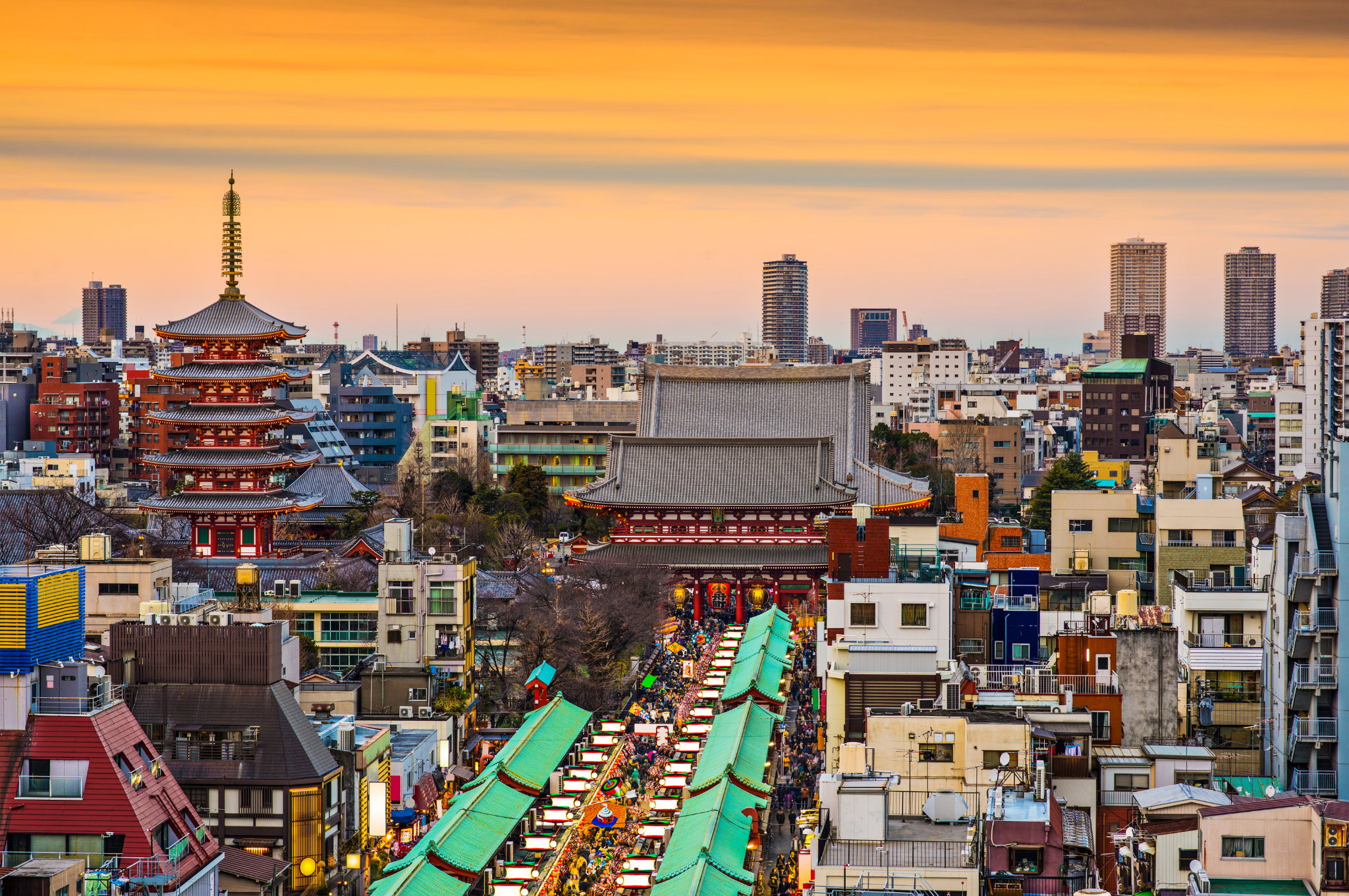
Here you can explore quaint shops selling traditional snacks and crafts, and enjoy the picturesque surroundings, including places like Kappabashi, a paradise for cooking enthusiasts, or walking around the Sumida River. Asakusa is also home to various festivals and events throughout the year, so it’s definitely a spot that you cannot miss.
More info: 20 Best Things to Do in Asakusa
Sumida Hokusai Museum
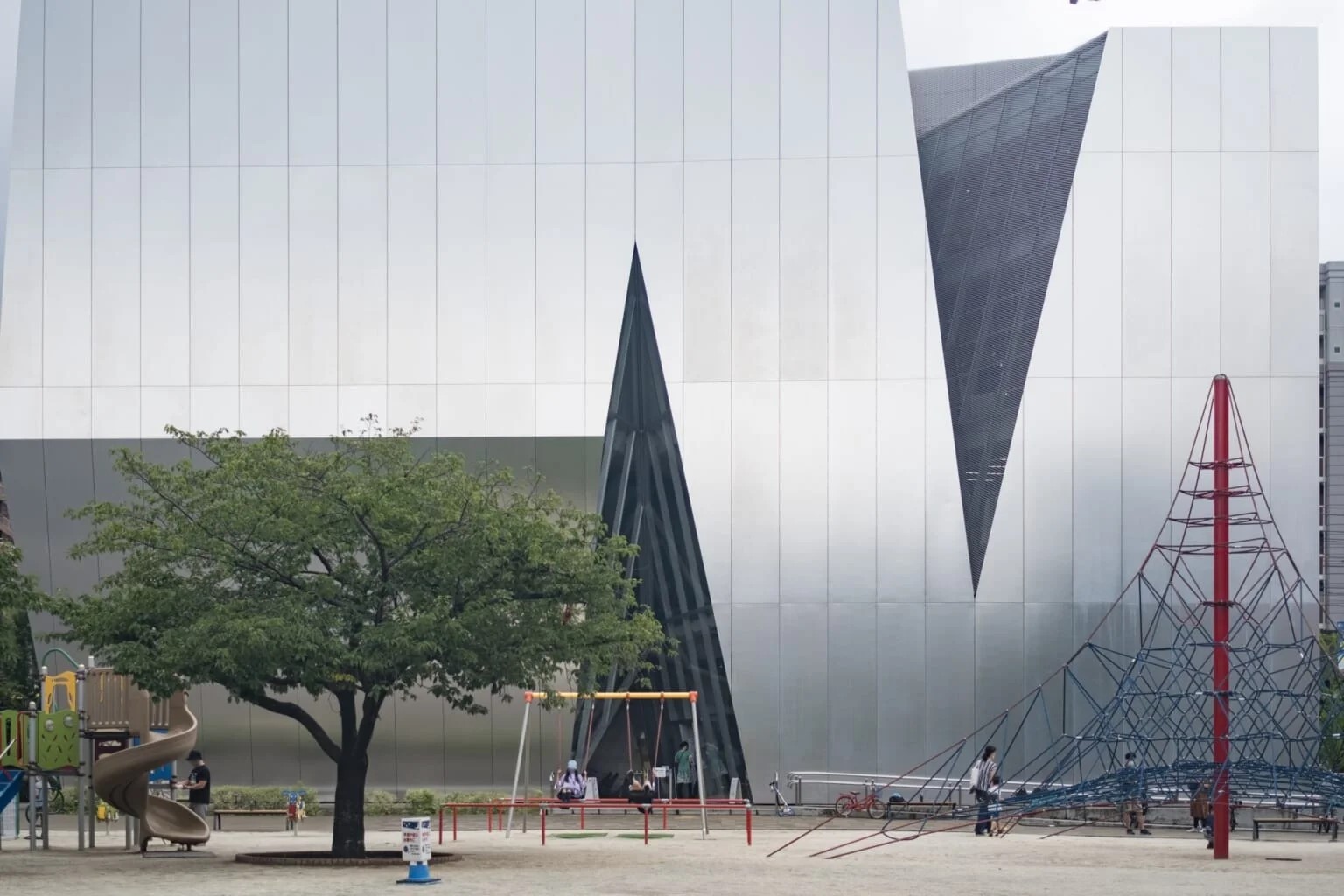
Here you can learn about the artist’s influence on Japanese and global art and explore his lesser-known works, gaining a deeper appreciation for his contribution to the world of art.
More info: Sumida Hokusai Museum: Enjoy Ukiyo-e Art in Tokyo!
Edo-Tokyo Museum
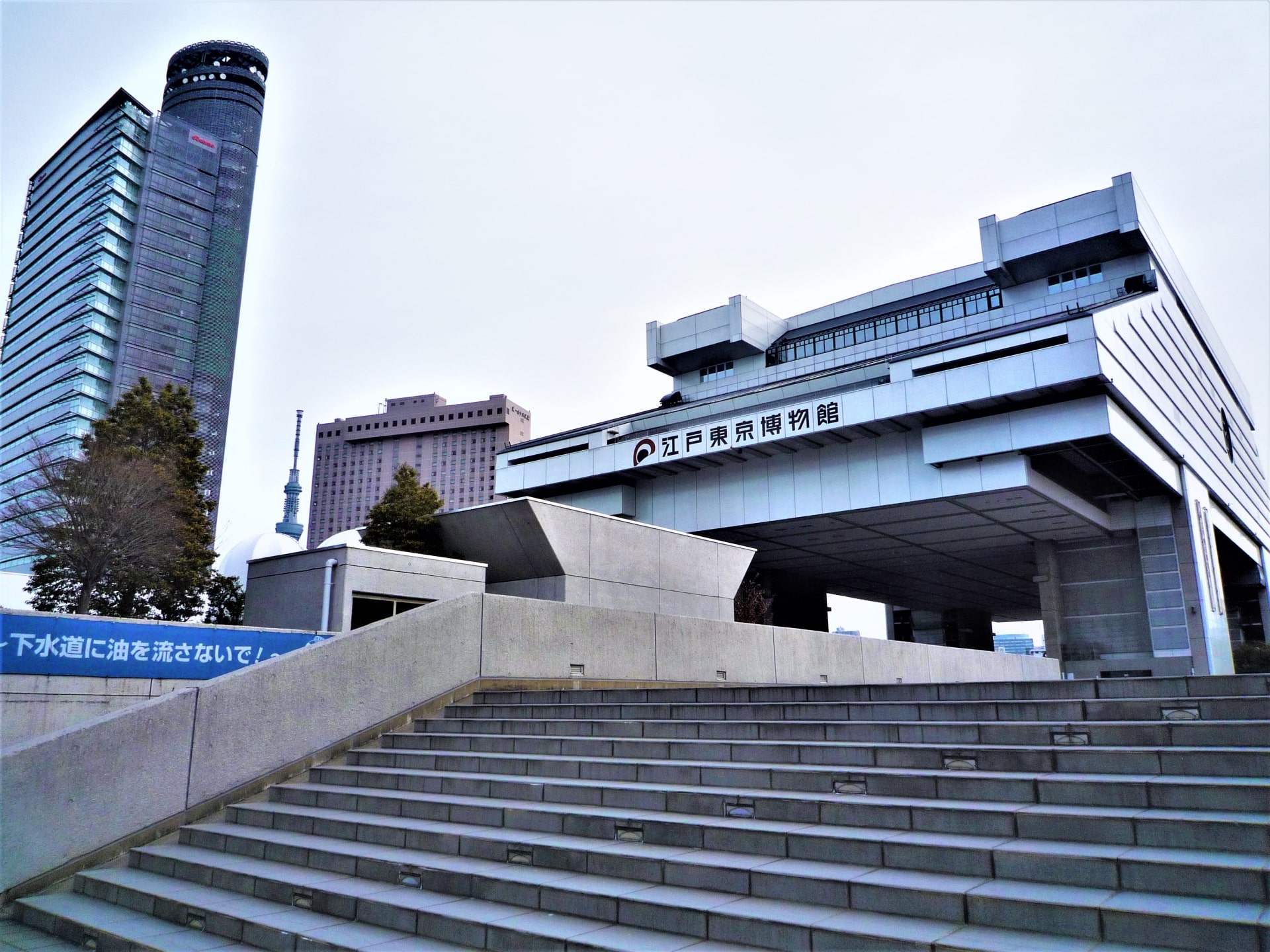
Located in nearby Ryogoku, the Edo-Tokyo Museum (江戸東京博物館) provides an immersive journey through Tokyo’s history from the Edo period to the present day. The museum features life-sized replicas, intricate models, and interactive displays that depict the city’s evolution over centuries.
Highlights include a full-scale replica of the Nihonbashi bridge and detailed recreations of Edo-period streets. The museum’s engaging exhibits and informative displays make it an educational and entertaining destination for visitors of all ages, offering a comprehensive overview of Tokyo’s cultural heritage.
More info: Edo-Tokyo Museum: Experience the Great History of Tokyo!
Ryogoku Kokugikan
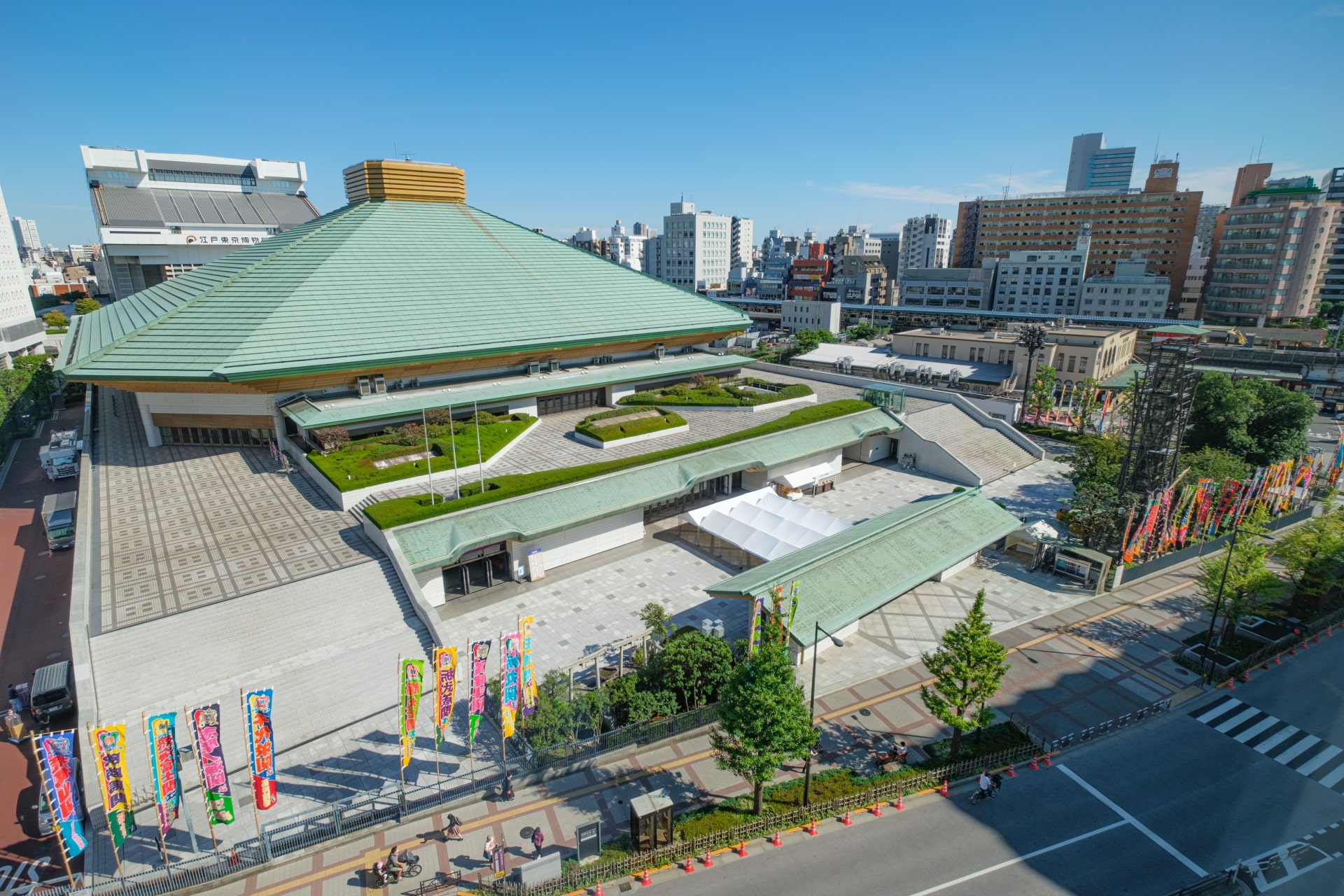
<<Book here for Tokyo Sumo Tournament Tour in January, May and September!!!>>
More info: 10 Best Things to Do in Ryogoku & How to Watch Sumo in Japan
▽Subscribe to our free news magazine!▽
For more information about landmarks and traveling in Japan, check these articles below, too!
▽Related Articles▽
▼Editor’s Picks▼
Written by
Photographer, journalist, and avid urban cyclist, making sense of Japan since 2017. I was born in Caracas and lived for 14 years in Barcelona before moving to Tokyo. Currently working towards my goal of visiting every prefecture in Japan, I hope to share with readers the everlasting joy of discovery and the neverending urge to keep exploring.





